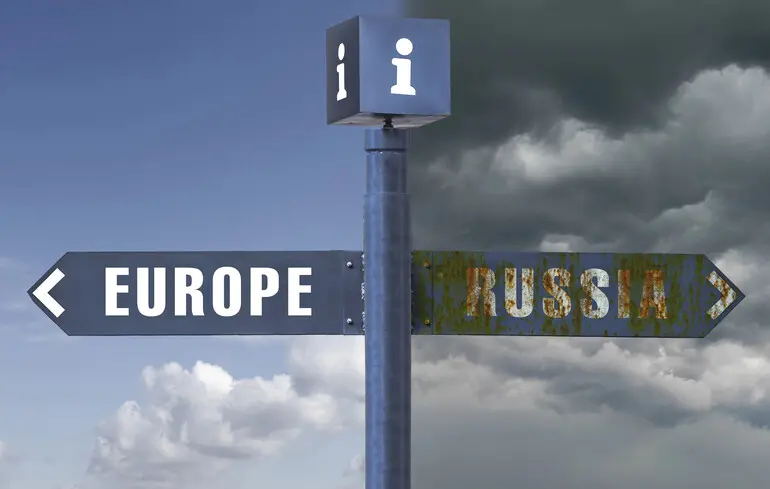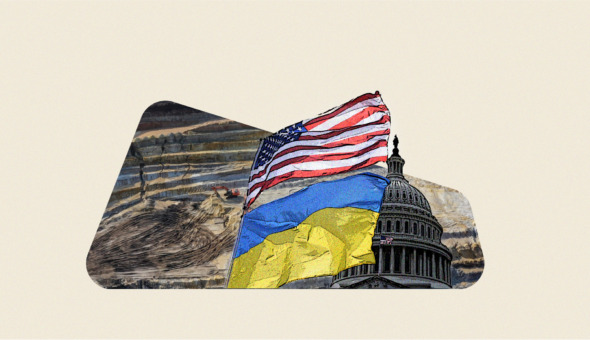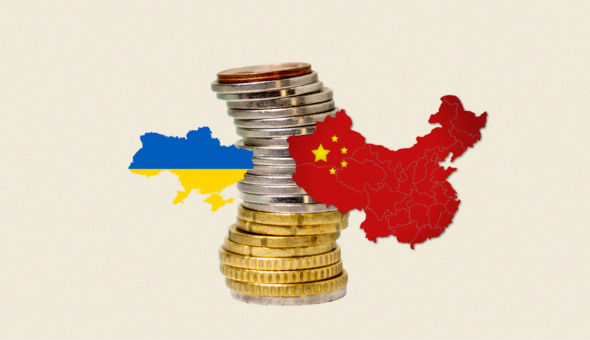
The European Union has adopted its 18th package of sanctions against russia. For Ukraine, this is more than just another political signal. It is the result of consistent, well-reasoned, and systematic advocacy work that truly delivers results. Every such decision is backed by months of analysis, negotiations, coalition-building, and dialogue with partners. And it’s important to understand: when we speak to the world in the language of facts, sanctions stop being mere declarations and become real blows to the kremlin’s ability to continue the war.
The new package includes 55 new individuals and entities subject to personal sanctions: 14 individuals and 41 legal entities. In total, the EU’s sanctions list now includes more than 2,500 persons and companies. In the energy section, a dynamic mechanism has been adopted: the price cap on russian oil has been lowered to \$47.60 per barrel, with the possibility of adjustment every six months — the new limit will be set at 85% of the average market price. Additionally, another 105 vessels of the “shadow fleet” have been blocked — bringing the total to 444 — and for the first time, a ship captain has been included on the sanctions list.
Starting January 21, 2026, a ban will come into effect on the import into the EU of petroleum products made from russian oil in third countries (excluding the USA, Canada, the UK, Switzerland, and Norway). The Czech Republic will lose its exemption allowing the import of russian oil via pipeline. A complete ban has also been introduced on any activity related to Nord Stream 1 and 2, as well as on the import of russian LNG through terminals not connected to the EU gas grid. In the financial sector, the new measures include a full ban on providing services to 22 more russian banks (bringing the total to 45), a prohibition on transactions with financial institutions that use russia’s SPFS system (the equivalent of SWIFT), and the blocking of transactions involving crypto services that help circumvent sanctions.
The activities of the russian Direct Investment Fund have been completely blocked. Export restrictions have been significantly expanded: 26 companies supporting russia’s military-industrial complex are now under sanction, including 11 based in China, Hong Kong, and Turkey. The export of sensitive technologies, chemicals, and equipment worth over €2.5 billion has been banned.
EU member states have been granted the right to halt exports if there is suspicion that russia may be the final recipient. A separate decision enshrines legal protection for the EU’s sanctions policy: court rulings from third countries regarding sanctions will not be recognized within the EU, and damages may be recovered from russian companies that initiate such lawsuits. Belarus has also been targeted: sanctions now affect eight defense enterprises, and include an arms embargo, financial restrictions, and trade limitations.
Sanctions are not working sufficiently
In May 2025, russia’s revenues from oil and gas exports fell by 35% year-on-year, down to 512.7 billion rubles (approximately $6.55 billion) — the lowest monthly figure since July 2023. At present, the country’s military capabilities are being financed by diverting resources from other critically important sectors of the economy — from metallurgy to social spending.
This clearly illustrates the systemic nature of the crisis and the vulnerability of the russian economy, which now stands on the brink of collapse. The cost of components is rising sharply, imports are increasingly difficult, and even exports to China are gradually declining. If we look past the facade of military strength that russia has constructed, we will see a genuine economic crisis — and this is precisely what the EU can leverage to deliver an even more powerful economic blow.
Despite everything, russia has spent over \$1 trillion on the war over the past three years. It still earns billions from oil exports. The pace and coordination of sanctions between the EU and the US can stop this war machine — but only if sanctions are applied comprehensively and without exceptions. We are clearly defining our priorities in sanctions policy. It is especially important that a dynamic mechanism has been introduced for reviewing the oil price cap to ensure its effectiveness. This is a significant step forward, particularly when combined with the new ban on importing petroleum products made from Russian oil and brought in from most third countries.
However, had such a ban been implemented during the first rounds of sanctions, we likely wouldn’t have witnessed russia’s rapid military buildup. After all, oil exports still account for a third of the russian government’s revenues.
The first and most crucial requirement right now is to accelerate the decision-making process and close the loopholes in the enforcement of existing sanctions packages.
The second key demand is the complete blockade of the so-called shadow tanker fleet, which russia uses to circumvent sanctions. This involves hundreds of vessels that conceal their routes, switch off transponders, change flags, and export oil through “grey” schemes. These tankers are serviced by insurance, logistics, and port companies across various jurisdictions.
The next step for the EU should be to ban sanctioned vessels from passing through EU territorial waters. Denmark, which currently holds the EU presidency, is uniquely positioned to advance such a regulation — as it controls access to the Baltic Sea. Denmark could play a key role in restricting the movement of so-called “empty” russian ships, which are in fact part of the shadow tanker fleet helping Russia evade sanctions.
The third, equally important direction is the imposition of secondary sanctions — tightening restrictions against companies and states that help Russia circumvent existing sanctions. This is especially relevant when it comes to the supply of components to Russia’s military-industrial complex through third countries. Such practices must be stopped.
Up to international isolation
Equally important is to launch a full-fledged mechanism for confiscating frozen russian assets and using them to arm and rebuild Ukraine. This is not only legally possible but also morally justified. Already, $14.7 billion has been used to support Ukraine’s budget. But we expect more — at least $50 billion of the frozen profits should be directed towards recovery and security. Russia, as an aggressor country that flagrantly violates international law, must be removed from influence in international organizations.
A state that has destroyed all the principles of the Helsinki Accords cannot remain in the OSCE or keep a permanent seat on the UN Security Council. This is not a matter of rhetoric — it is a matter of trust in the international order. Today’s decisions by the EU are the result of joint work by Ukrainian diplomats, civil society, and analytical centers. And, of course, Ukraine must also take a principled step — to stop the transit of russian oil through the Druzhba pipeline. This would send a powerful signal not only to the aggressor but also to our partners that there can be no compromises with terror.
Sanctions are not the finish line, but a tool that must become sharper and stronger every day. The EU, the US, and the G7 countries must act in sync. For Ukraine, it is extremely important that these decisions are not fragmented but complement each other, creating maximum pressure on all key sources of funding for russia’s war.
Ukraine expects coordinated actions between the EU, the US, and the G7, especially regarding secondary sanctions that limit circumvention. We also expect the US Congress to prepare legislation on the confiscation of russian assets, not just the transfer of interest. Such a move would strengthen the West’s global leadership and the effectiveness of sanctions policy. We thank the EU but emphasize: a strategy is needed for the total isolation of russia and strikes on its vulnerable points.



